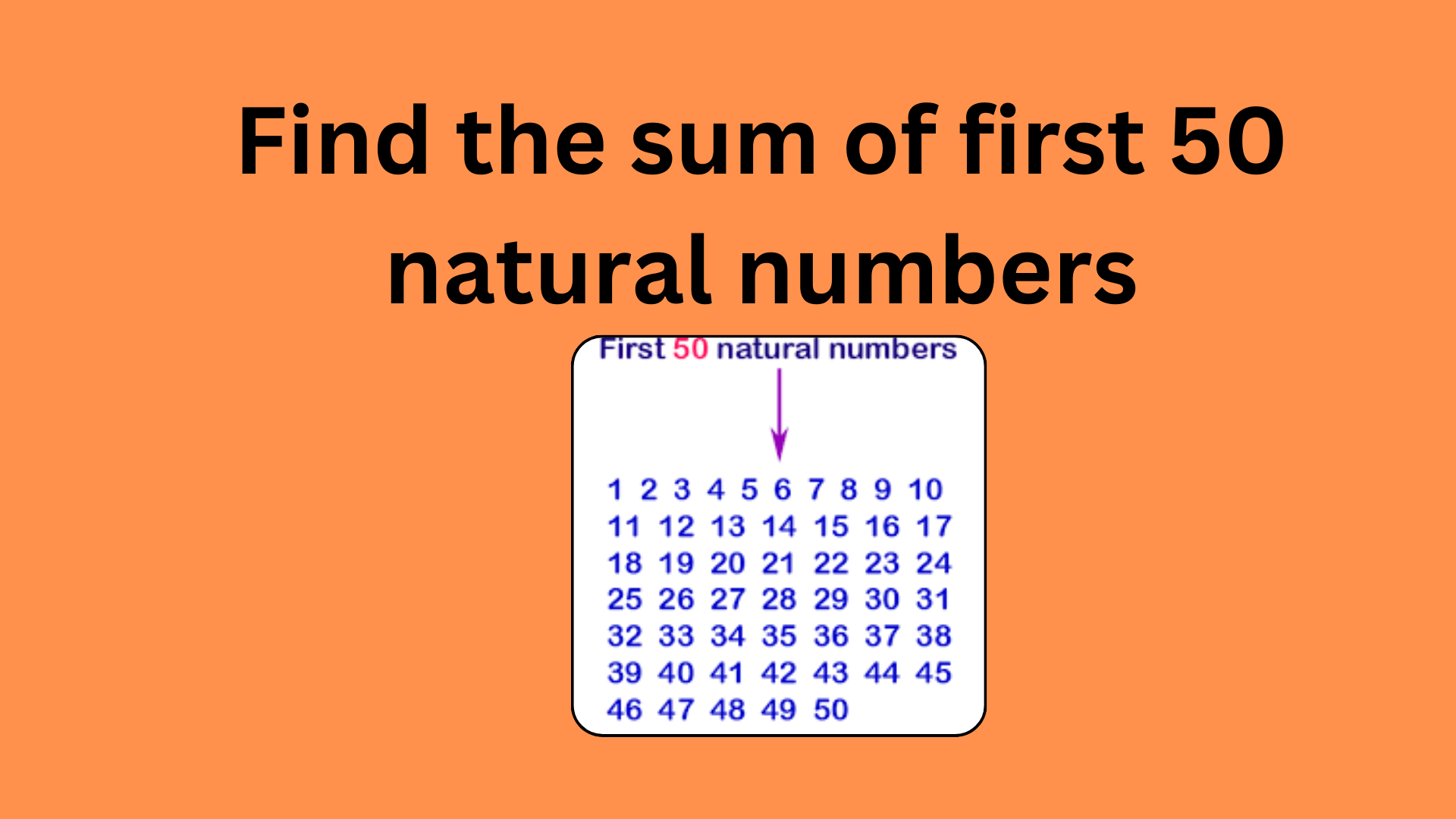
How To Quick and Easy Method to Find the Sum of 1 to 50
Arithmetic is the cornerstone of number theory, a branch of mathematics that deals with numbers and various operations performed on them, such as division, multiplication, addition, and subtraction. Number theory classifies numbers based on their properties, and among these, natural numbers play a significant role. Natural numbers are the positive integers starting from 1 and extending infinitely. In other words, they are all the positive whole numbers excluding zero. In this article, we will delve deeper into natural numbers and explore a quick and easy method to find the sum of natural numbers from 1 to 50.
Understanding Natural Numbers
Natural numbers are integral to mathematics, serving as the foundation for counting. They encompass positive integers such as 1, 2, 3, 4, 5, and so on, extending indefinitely. The key characteristic of natural numbers is the constant and unit difference between consecutive numbers. In simpler terms, the difference between any two successive natural numbers is always 1, regardless of their actual values.
You Might Like This:
- How To Resolving “Container Runtime Not Running” Error
- How To Solving File Specified Errors (winerror 2) in Windows 10
- How To Advanced AWS Certified Cloud Practitioner – 2023
- How To Solving Socket Errors: A Deep Dive into errno 11001
Mathematically, we can express this property as follows:
Common difference = |a – b| = 1 = |b – a|
Here, ‘a’ and ‘b’ represent two natural numbers in succession. It’s essential to note that this difference is always positive.
Another interesting property is that if the common difference between any two consecutive natural numbers is 1, it can be written in terms of other numbers. For instance:
a – b = 1
This equation can be rearranged as:
a = 1 + b
Considering that T(n-1) and T(n) are in succession, we can deduce the value at the ‘n’th position as:
T(n) = T(n-1) + 1
or
T(n+1) = T(n) + 1
For example, if T(n) = 3, then:
3 = 2 + 1
In this case, 1 is the first natural number, and 3 is the third natural number, thus confirming an arithmetic progression (AP) with a common difference of 1.
This leads us to the general formula for any natural number ‘n’ in the sequence:
T(n) = (n-1)d + T(1)
Where ‘d’ represents the common difference between two consecutive numbers, ‘n’ is the position of the number in the natural number series, and ‘T(1)’ is the first number in the sequence.
Calculating the Sum of 50 Natural Numbers
Finding the sum of the first 50 natural numbers individually can be a time-consuming task. However, since the first 50 natural numbers form an arithmetic progression with a common difference of 1, we can derive a general formula to make the calculation more efficient.
To calculate the sum of the first ‘n’ natural numbers, we can use the previously discussed formula:
T(n) = 1 + 2 + 3 + … + n
Adding T(n) to both sides of the equation, we get:
T(n) + T(n) = 1 + 2 + 3 + … + n + T(n)
This can be simplified as:
2T(n) = 1 + n + 2 + (n-1) + 3 + (n-2) + … + (n-1) + 2 + n
Notice that each pair of terms on the right-hand side sums to (n+1):
2T(n) = (n+1) + (n+1) + (n+1) + … + (n+1) + (n+1)
Simplifying further:
2T(n) = n(n+1)
Now, solving for T(n):
T(n) = n(n+1)/2
Therefore, to find the sum of the first 50 natural numbers:
T(50) = 50(50+1)/2
T(50) = 25 × 51
T(50) = 1275
Hence, the sum of the first 50 natural numbers is 1275.
Similar Problems
Question 1: What is the difference between the sum of the first ten natural numbers and the sum of the first twenty natural numbers?
Solution:
To calculate the sum of the first ten natural numbers, we can use the formula:
T(n) = n(n+1)/2
For n = 10:
T(10) = 10(10+1)/2
T(10) = (10×11)/2
T(10) = 110/2
T(10) = 55
Now, for n = 20:
T(20) = 20(20+1)/2
T(20) = (20×21)/2
T(20) = 420/2
T(20) = 210
Therefore, the difference between the sum of the first twenty natural numbers and the sum of the first ten natural numbers is:
T(20) – T(10) = 210 – 55 = 155
Question 2: Solve the expression (1+2+3+4+5…25) × (30+29+27+28…1)
Solution:
This question involves the product of two summations. We can use the formula for the sum of natural numbers:
T(n) = n(n+1)/2
For n = 25:
T(25) = 25(25+1)/2
T(25) = (25×26)/2
T(25) = 650/2
T(25) = 325
Now, for n = 30:
T(30) = 30(30+1)/2
T(30) = (30×31)/2
T(30) = 930/2
T(30) = 465
Therefore, the expression (1+2+3+4+5…25) × (30+29+27+28…1) can be calculated as:
T(30) × T(25)
325 × 465
151,125
In summary, understanding the properties of natural numbers and their summations can help solve various mathematical problems efficiently. Whether you’re preparing for a job interview or simply exploring mathematical concepts, these principles are fundamental in your journey of mathematical discovery.

